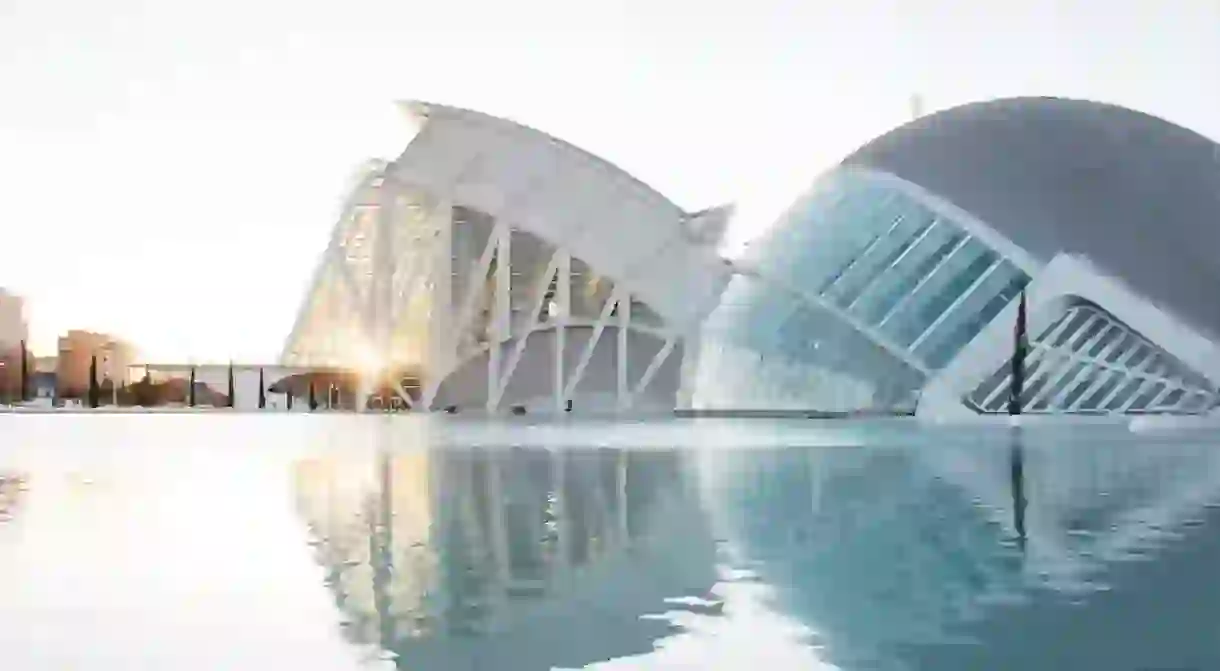10 Things You Didn't Know About the Ciudad de las Artes y las Ciencias, Valencia

No trip to Valencia would be complete without the City of Arts and Sciences, or la Ciudad de las Artes y las Ciencias. This ultra-modern scientific and cultural complex is the largest of its kind in Europe, and it is fast becoming the city’s most recognisable symbol. Here are ten facts you might not know about it.
Valencian architecture
The entire complex was designed by homegrown talent. Valencian architect Santiago Calatrava was responsible for most of the design, along with another Spanish architect, Félix Candela.

It took nearly a decade to build
Work began on the first part of the complex, L’Hemisfèric, in July 1996. The last building to be completed was the Palau de les Arts Reina Sofia. It was inaugurated on Valencian Community Day, October 9, 2005.
It cost €900 million
The project was expected to cost €300 million, but went three times over budget, provoking anger from many Valencian people who thought it was a waste of public money. To this day you’ll find many locals have mixed feelings about the complex.

12 Treasures of Spain
Valencia’s City of Arts and Sciences has been voted one of the 12 Treasures of Spain (Los 12 Tesoros de España) in a public poll created by Spanish media, ranking alongside world-famous sights like the Sagrada Família in Barcelona and Granada’s famous Alhambra.
TV and film
The futuristic landscape is perfect for the big screen. A Doctor Who episode was filmed here and the complex was also featured in the George Clooney film Tomorrowland.

Europe’s largest aquarium
The huge Oceanografic is the biggest aquarium in Europe, housing some 500 different species of marine life including dolphins, belugas, sea lions, penguins and sharks, set in seven different marine environments representing various corners of the world including the Mediterranean, the polar oceans and the Red Sea.

Las Fallas
Valencia’s explosive main festival Las Fallas comes here every year. Or part of it, at least. The Exposicion del Ninots in February and March each year showcases the 700 intricately-painted wooden figures, or ninots, which will be placed on the giant sculptures to be burnt at the upcoming Fallas festival. The public can vote to save their favourite figure from the flames.
Outdoor club
The Umbracle structure is a tropical garden framed by white arches and surrounded by changing art installations. It’s a great vantage point for taking photos of the complex, but more interestingly, during the summer months the space also becomes an open-air nightclub after dark.

Empty building
One of the buildings is not open to the public. Look for the blue building, known as the Agora – it was formerly used as a venue for the Tennis Open, until the cost of hosting the event proved too much for Valencia. Today it stands empty and closed to the public, although authorities say it will become a multipurpose event space.
Music festival
In summer each year the grounds of the complex become the venue for the Festival de les Artes, a large local and international indie-focused music festival right in the heart of the city centre.














